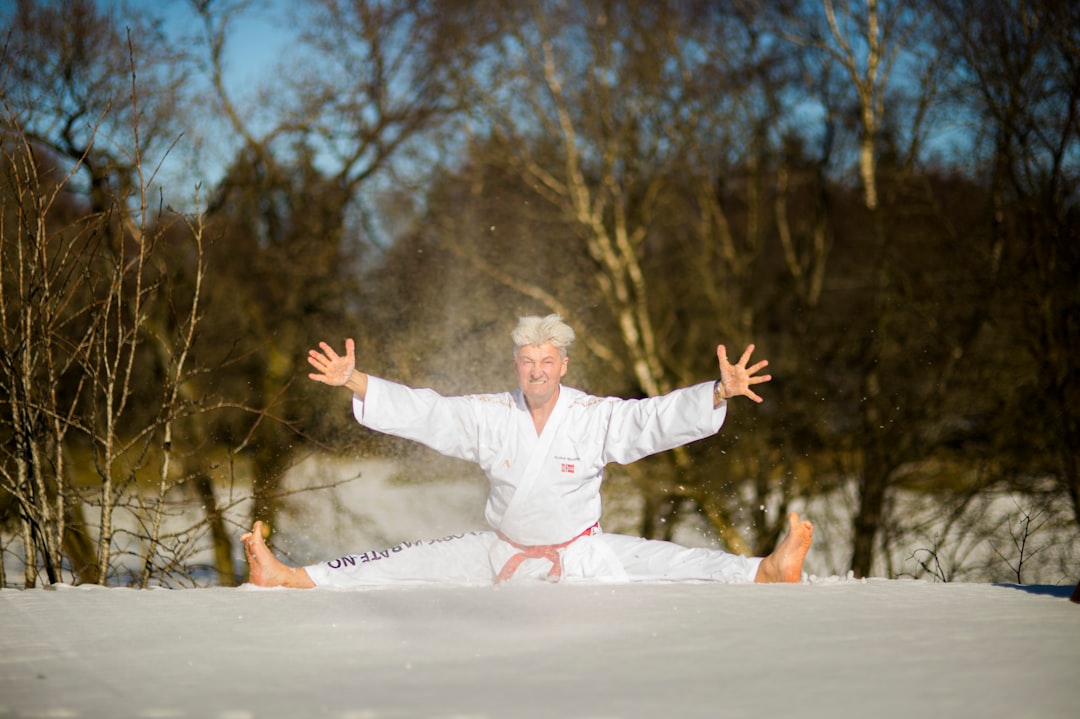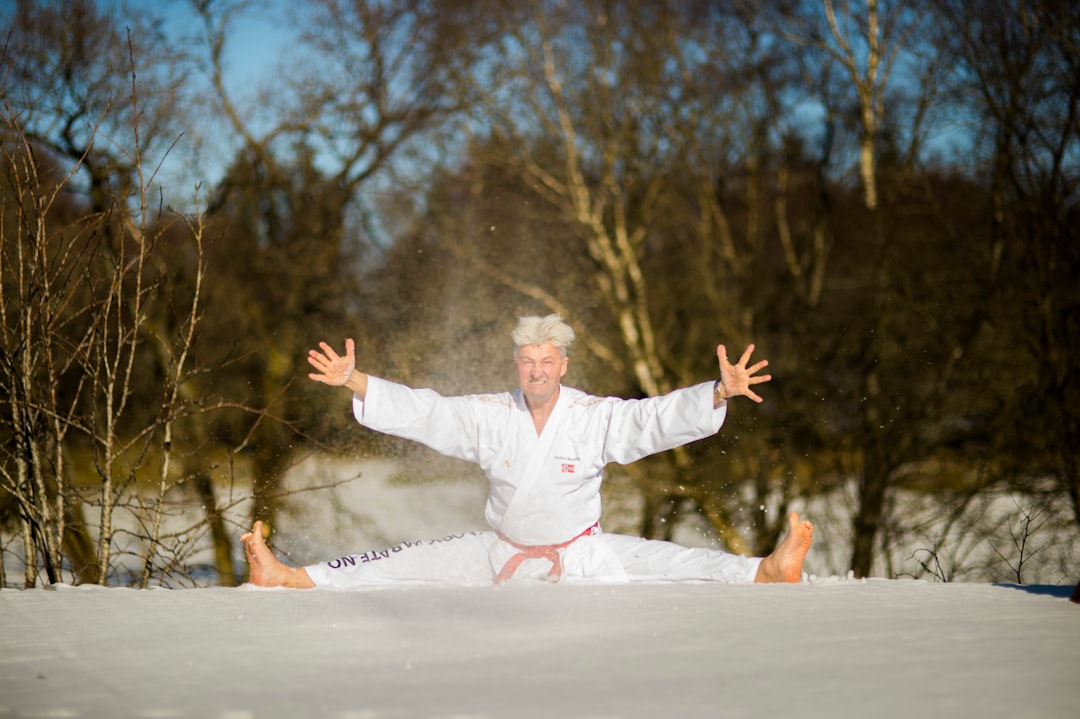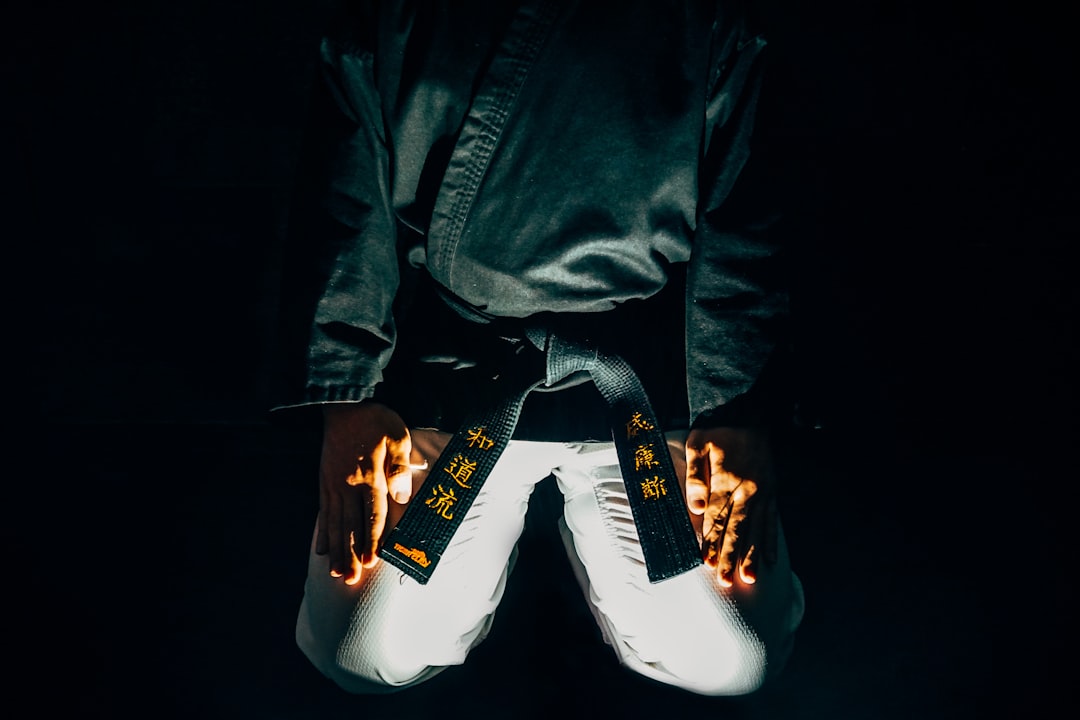When practicing karate, selecting a well-crafted gi (karate uniform) that adheres to tradition and supports functional performance is essential. A high-quality gi made from durable materials like cotton or hemp ensures comfort and resilience during practice while maintaining the formality required for grading and competitions. Proper care of your gi, involving cold water washes with gentle detergent and air drying to avoid shrinkage, extends its life and honors the discipline of karate. The ideal dojo is equipped with tatami mats for safe practice, full-length mirrors for self-assessment, and ample lighting for precise form observation. The karate uniform, or gi, is mandatory during practice and is complemented by additional training equipment like heavy bags, speed bags, focus mitts, and kata-specific tools like the Makiwara. For safety in sparring and practicing kata, protective gear such as padded gloves, kick shields, hand pads, foot guards, headgear, and groin protectors are indispensable, ensuring full-power practice without injury. The karate uniform, or gi, is a symbol of respect for the tradition, while the use of protective gear is integral to both authentic training experience and safety for all levels of practitioners.
delve into the dynamic world of karate, where tradition meets discipline. This article explores the fundamental equipment that underpins this martial art’s practice. From the gi, a crucial component of a karateka’s attire, to the specialized mats and mirrors in a dedicated dojo, each element is integral to mastering the art. We’ll examine the specific gear that enhances technique execution during kata and kumite, and the protective aids that safeguard practitioners during sparring sessions. Join us as we dissect the essentials of karate equipment for an authentic and safe training experience.
- Understanding the Essentials of Karate Uniforms: Gi Selection and Care
- The Anatomy of a Karate Dojo: From Mats to Mirrors
- Techniques in Focus: Equipment Tailored for Kata and Kumite
- Accessorizing Your Practice: Protective Gear and Aids in Karate Training
Understanding the Essentials of Karate Uniforms: Gi Selection and Care

When practicing karate, selecting the appropriate uniform, commonly known as a gi, is crucial for both functionality and respect for the martial art’s tradition. A high-quality gi not only allows for ease of movement during practice but also provides the correct formality for grading or competition. The traditional gi consists of a jacket and trousers, typically made of cotton or hemp, which offers durability and comfort. Are the karate uniforms you’re considering constructed with durable materials that will withstand regular use? Optimal karate uniforms are designed to last, ensuring that they remain intact after numerous washes and wears. Additionally, the right care for your gi is essential to maintain its condition; proper washing and ironing techniques preserve its shape and longevity. How should you clean and maintain your karate gi to ensure it remains in top condition? To maintain a karate uniform, it’s recommended to wash it after every few uses to remove perspiration and prevent odors from setting in. Always use cold water and a mild detergent, avoid fabric softeners, and air dry the garment to prevent shrinking or damage to the fabric. Properly maintaining your karate gi ensures that it not only lasts longer but also remains respectful to the tradition and discipline of karate practice.
The Anatomy of a Karate Dojo: From Mats to Mirrors

When practitioners step into a karate dojo, they are immersed in an environment meticulously designed to facilitate training and discipline. At the heart of this training space lies the tatami mats, which provide a soft yet firm surface for performing kata, exercises, and sparring. These mats are essential for the safety of the practitioners, absorbing impact and preventing injuries. Additionally, the dojo is typically equipped with mirrors that cover one or more walls, allowing students to observe and correct their techniques, postures, and movements in real-time. This reflective feature is particularly important for honing one’s form and ensuring that each movement aligns with the karate uniform name—the traditional gi—which must be worn during practice. Is the dojo well-lit and equipped with mirrors to facilitate self-observation and improvement? Yes, it is standard for a karate dojo to have mirrors on at least one wall and adequate lighting to ensure practitioners can monitor their performance closely. The layout of the dojo also includes training equipment such as heavy bags, speed bags, and focus mitts, catering to various aspects of karate training beyond the basics of kata and kihon.
Techniques in Focus: Equipment Tailored for Kata and Kumite

When practicing traditional forms known as kata, karate practitioners wear a specific type of attire that allows for freedom of movement and facilitates focus on the precise execution of techniques. A karate uniform, often referred to as a gi, is the standard garb for karateka during these exercises. The gi typically consists of a jacket, trousers, and a belt, with the color denoting the wearer’s rank or level of proficiency. Is the karate gi the only equipment necessary for performing kata? No, while it is essential, practitioners may also use additional tools to enhance their performance and understanding of the movements. For instance, a soft bamboo or wooden dummy called a Makiwara is sometimes used to practice specific strikes and develop timing and precision. Are these tools exclusively for kata practice, or do they have applications in other aspects of karate training? While kata provides the foundation for many karate techniques, similar equipment can also be utilized in sparring sessions, known as Kumite, where the application of techniques against a resisting opponent is practiced. For example, focus mitts and kick shields are common pieces of protective gear used to safely execute and defend against punches and kicks during these drills. What kind of equipment is commonly used in Kumite to ensure safety and effectiveness? In addition to the gi, protective gear such as hand pads, foot guards, headgear, and groin protectors are essential for both the striker and the defender to prevent injuries and allow for full-power practice without compromising safety. These items are critical in ensuring that karateka can train effectively and injury-free, whether they are mastering the precise movements of kata or engaging in the dynamic exchanges of Kumite.
Accessorizing Your Practice: Protective Gear and Aids in Karate Training

When practicing karate, selecting the right protective gear and aids is crucial to ensure both your safety and the integrity of your training. A key component of your karate practice is the karate uniform, which not only provides comfort and flexibility but also maintains the tradition and discipline associated with martial arts. The traditional gi, or karate uniform, typically consists of a jacket, trousers, and belt, each designed to allow for unobstructed movement while training. Are you looking for a karate uniform that will endure the rigors of your practice? Consider a heavy-weave cotton gi, as it offers durability and resists wear and tear over time. Additionally, knee pads and groin guards are essential protective gear for sparring, helping to prevent injuries from kicks and strikes. Do they offer protection for all parts of the body that may be vulnerable during practice or competition? Yes, high-quality karate protective gear includes padded gloves and foot protectors, known as mawate, which shield your hands and feet from impact, enabling you to train more confidently and safely. Whether you’re a beginner or an experienced practitioner, incorporating these protective items into your training regimen will help you focus on mastering the techniques rather than worrying about injuries.
In wrapping up our exploration of karate’s equipment landscape, it’s clear that the practice of this martial art goes beyond mere physicality; it involves a careful selection and maintenance of specialized gear. From the meticulous choice of karate uniforms—commonly known as ‘gi’—to the strategic use of protective gear for enhanced safety during intensive training sessions, each item serves a distinct purpose in the karate practitioner’s journey. A well-equipped dojo, replete with high-quality mats and mirrors, facilitates focused technique development in both kata and kumite. Practitioners can further refine their skills by accessorizing their practice with gear designed to aid in their progression. Whether you’re a novice or an experienced karateka, understanding the role of each piece of equipment is key to a successful and fulfilling martial arts experience.
